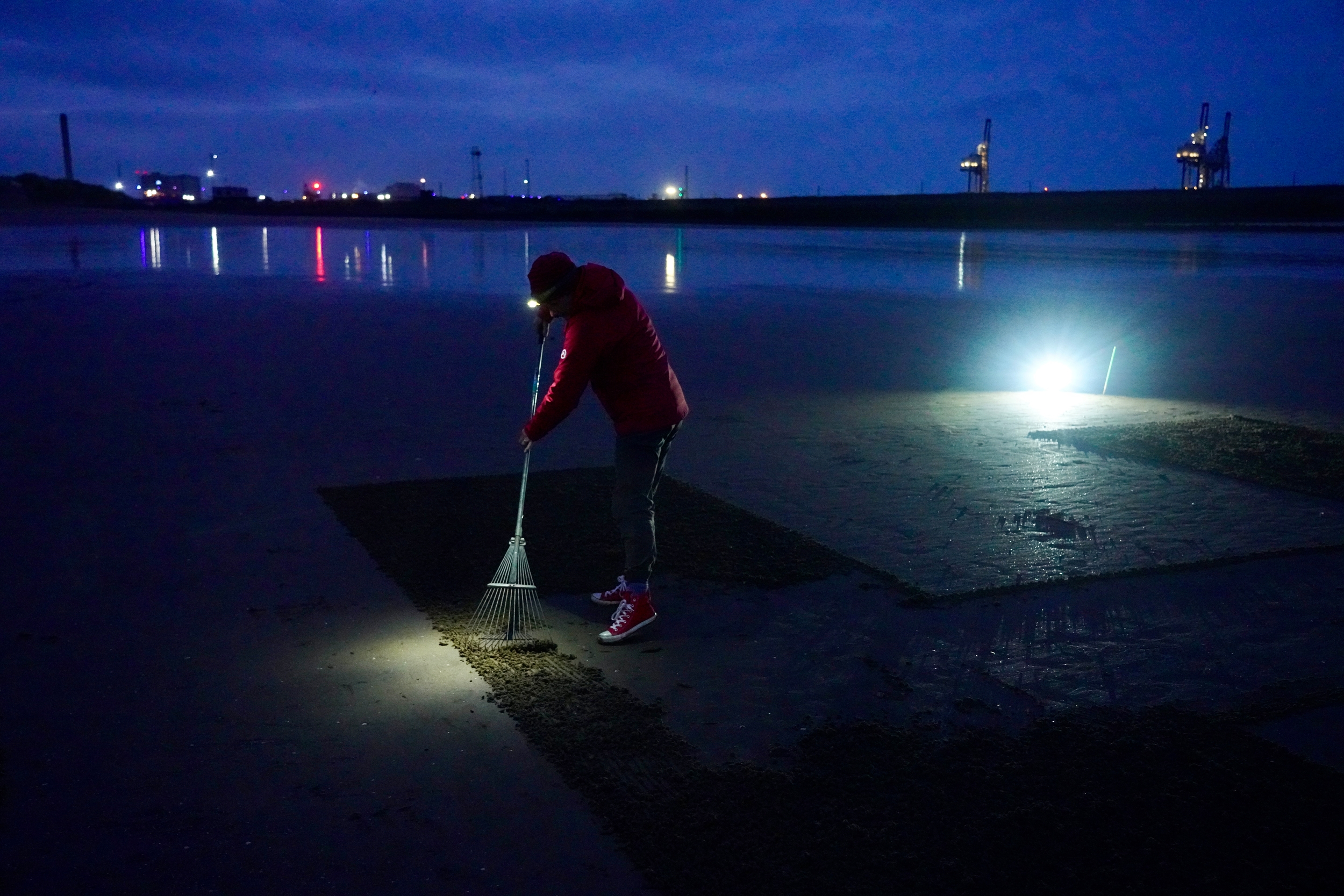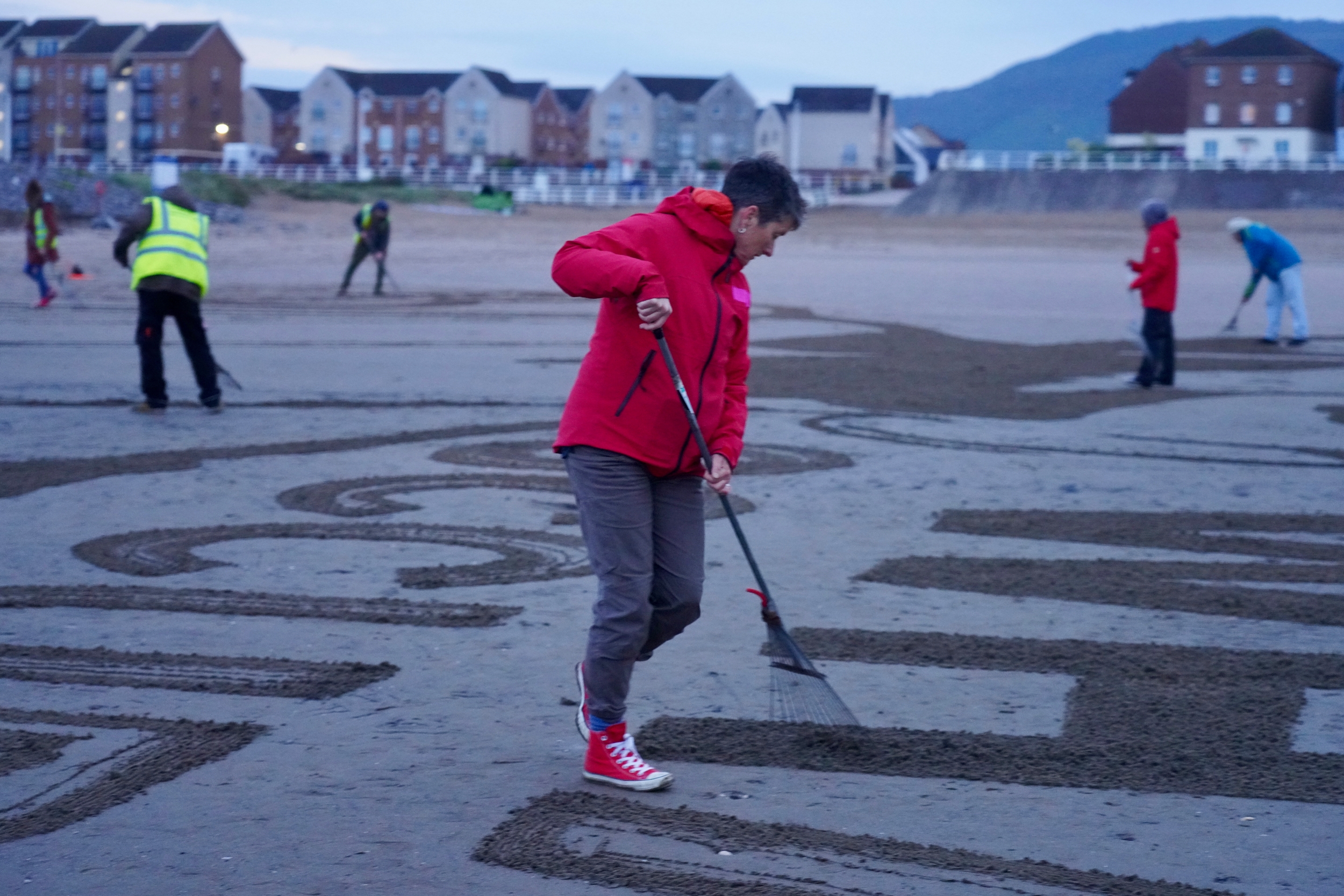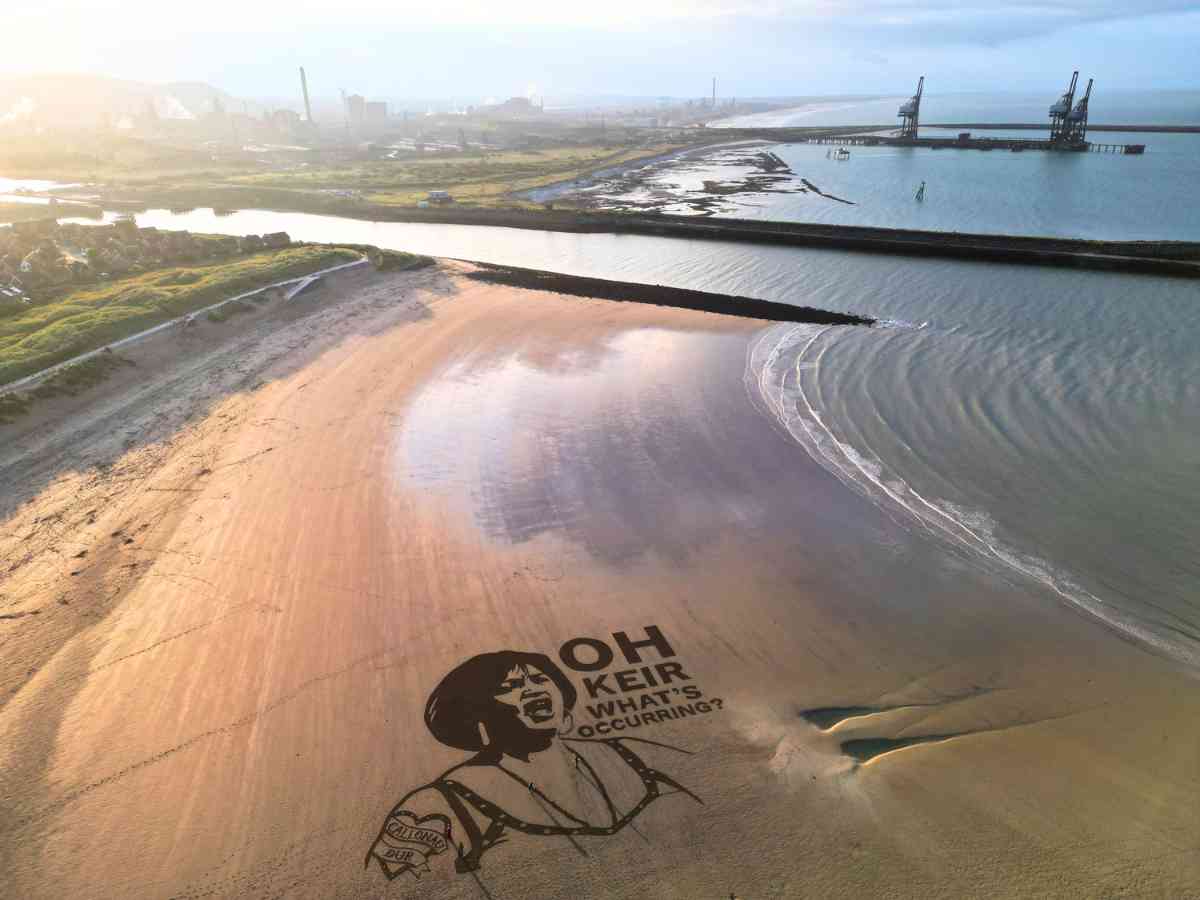Greenpeace and Extinction Rebellion Cymru Wales unveiled a 50m by 50m artwork of Nessa from BBC hit TV series Gavin and Stacey, etched in the sand of a beach at Port Talbot, against the iconic backdrop of Tata’s steelworks. The enormous artwork, half the length of a football pitch, portrays the character, Nessa asking the prime minister, “Oh Keir, what’s occurring?” to send Starmer a message about the future of UK steel after the closure of Port Talbot.
Port Talbot: drawing lines in the sand
The artwork, created by the arts organisation ‘Sand In Your Eye’, took several hours to draw out in the sand overnight, working in total darkness:


Four Welsh Greenpeace activists helped to rake the sand and put the finishing touches on the artwork, including the tattoo on Nessa’s arm that translates from Welsh as ‘hearts of steel’.
Following recent job cuts at the nearby Port Talbot steelworks, climate activists and trade unionists are calling on the prime minister to create a plan for green steelmaking in the UK which would protect jobs, be better for the climate, and stimulate the economy.
Green steelmaking is possible
The Port Talbot steelworks, one of the UK’s main steel producers, is facing mass redundancies with the blast furnace due to close imminently. The recent deal reached with the government will provide a smaller electric arc furnace that will melt scrap steel or iron to produce steel, but the steelworks will no longer be able to produce its own primary steel.
About 2,500 workers are set to be made redundant, with a further 300 expected to be made redundant in the future. Unions and campaigners argue that this could devastate the local community, and that the recent deal – while an improvement on the previous government’s offer – doesn’t go far enough to support workers or green steel production in the UK.
Greenpeace and Extinction Rebellion Cymru Wales argue that high grade green steel production is crucial for building a green economy. Green steel – including primary steel – is needed for building the wind turbines, railways, and electric vehicles that we need for the transition to a cleaner, greener society.
One option for making green steel that is rapidly advancing around the world – but not yet in the UK – would be to use green hydrogen instead of coal to maintain primary steel production. But campaigners argue that more government investment is needed than is currently on the table.
They are calling on the prime minister to create and fund a proper green industrial strategy with a commitment to green steel production at its heart. This would protect jobs and communities reliant on the steel industry, avoiding the devastating impacts seen in former mining areas.
Keep steelmaking at Port Talbot
Paul Morozzo, Greenpeace UK senior campaigner, said:
We are out here today to urge the Prime Minister to keep steelmaking at home, rather than rely on imported steel, and to put forward a well funded green industrial strategy with green steelmaking at its heart. The green transition requires reindustrialisation in this country, not deindustrialisation that has damaged communities in the past.
Proper investment in UK green steel production would help our renewable energy supply chain whilst supporting workers and communities in places like Port Talbot and Scunthorpe. This would give us British clean steel to build wind turbines, railways and electric vehicles that we need for the transition to a healthier, more secure, and greener way of life.
Tackling the climate crisis presents a huge opportunity to create good sustainable jobs, unlocking new economic opportunities for communities all over the country. Climate justice and worker justice must go hand in hand so that we can all experience the huge benefits of the transition to renewable energy.
Janina Hines of Extinction Rebellion Cymru Wales, said:
I’ve lived in Port Talbot all my life and generations of my family have worked at the steelworks, so what’s happening here is really personal for me. Everyone in the community has a family member or close friend who will be affected, it could be devastating for communities in South Wales and beyond. We have seen from the disastrous closure of coal mines in the 1980s the lasting effect these decisions can have when they don’t have workers and communities at their heart.
I care deeply about the threats that climate change is bringing to Wales and the world over, which is why I’m fighting for the climate as an activist locally. Today I want to urge the Prime Minister to put forward a fully funded plan for UK green steel, so we can make the most of the opportunities that the move towards a green economy can bring, local economies can flourish, and jobs can be protected. We are urging the Prime Minister to show global leadership on green steel now.
Claire Peden, a team leader at Unite the Union, said:
It’s clear, the government has been short-sighted in allowing the move away from producing Virgin Steel in Port Talbot. As Tata closes the blast furnace in Wales, it builds a new one in India, this is not a green transition. We urge the government to invest in the future with concrete job guarantees that will give Welsh steelmaking a bright future.
Featured image and additional images via Greenpeace




